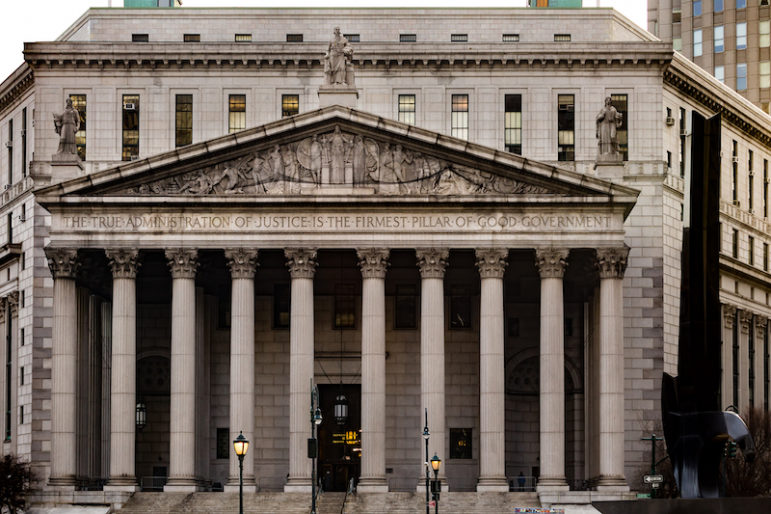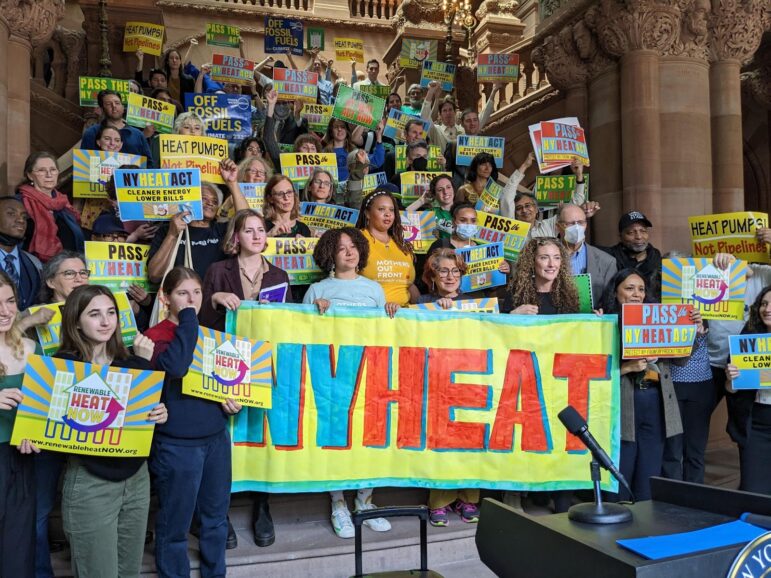A look back at key moments in our newsroom’s coverage this year: the reopening of NYCHA’s Section 8 waitlist for the first time in 15 years, a solar eclipse, ‘good cause’ eviction and more.
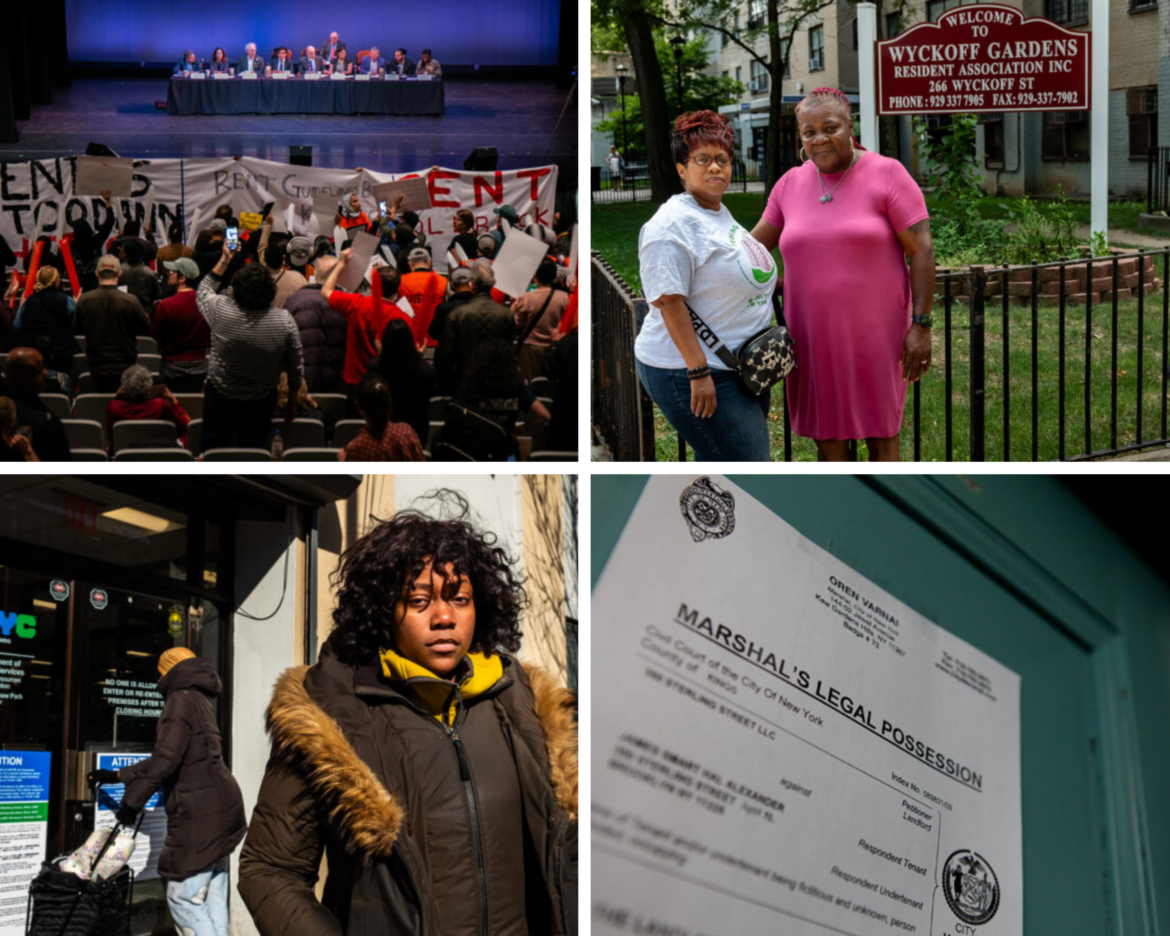
Adi Talwar, Marc Fader
Photos from some of our most-read stories in 2024.As 2024 comes to a close, we’re looking back at some of the key events and issues that defined the year. Below are the 10 most-read City Limits stories from the last 12 months.
Appreciate our coverage? All donations up to $1,000 received by midnight on 12/31 will be doubled! Give here.
NYCHA to Reopen Section 8 Waitlist After 15 Years. Here’s How to Apply
(Published May 22)
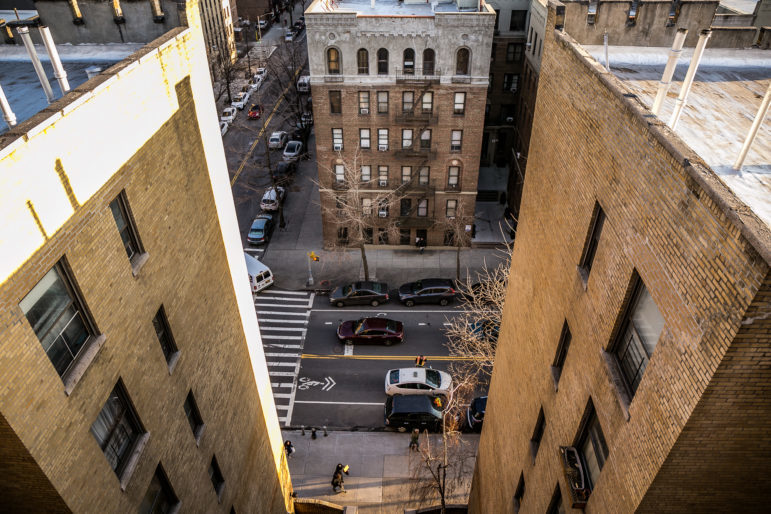
Adi Talwar
Apartment buildings in Manhattan.
In May, the city announced it would give New Yorkers across 200,000 households a fresh shot at a coveted, federally-backed rental voucher by reopening NYCHA’s Section 8 waitlist for the first time since 2009. Demand for the program—in which voucher holders typically pay 30 percent of their income on rent, with the subsidy covering the remainder—was sky-high, garnering more than 638,224 submissions during the week-long application period.
“We just want to make sure that everyone has an opportunity to apply, because it could be a life changer,” Assemblymember Marcela Mitaynes, who represents Brooklyn’s Red Hook and Sunset Park neighborhoods, told City Limis at the time. Mitaynes turned her district office into a “base” for people seeking application assistance. “It’s this little glimpse of hope,” she said.
Read the story.
Scenes From Closing Day at a Bronx Benefits Center
(Published Feb. 22)
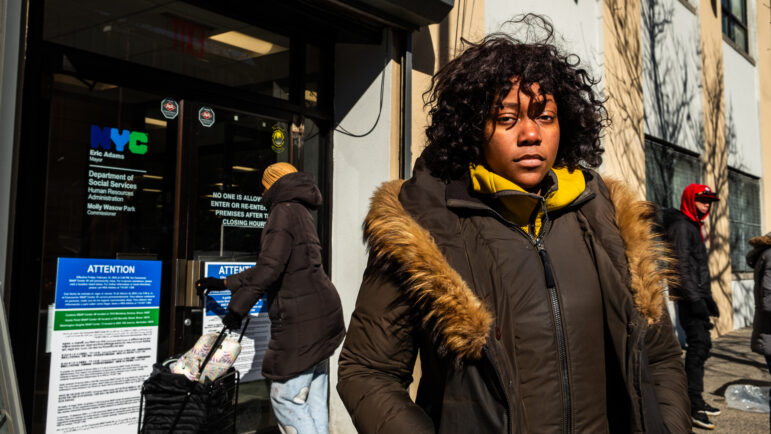
Adi Talwar
Tyler London outside HRA’s walk-in benefits center at 1365 Jerome Ave. in The Bronx on its final day of operation.Feb. 16 marked the final day of operations at 1365 Jerome Ave., where Human Resources Administration (HRA) staff helped New Yorkers apply for food, Medicaid and cash assistance. HRA said the closure came as the city strengthens its “highly-effective remote processes in a post-pandemic landscape.” But advocates said the shift away from in-person services has been rocky, and that the city should be expanding, not contracting, what amounts to a preferred option for many.
“I like this center. The people I talk to are very nice,” said Tyler London, who was there with her 1-year-old daughter after receiving an error message that she feared would suspend her cash support and SNAP, also known as food stamps. She said she prefers coming to Jerome Avenue when she has questions because it is difficult to get through on HRA’s customer service line. “It’s very hard to get through to anybody,” London said. “And when they told me that they’re going to call me back…they never called me back.”
City’s Plan to Address Uber & Lyft Driver ‘Lockouts’ Won’t Resolve Crisis, Union Claims
(Published Aug. 5)
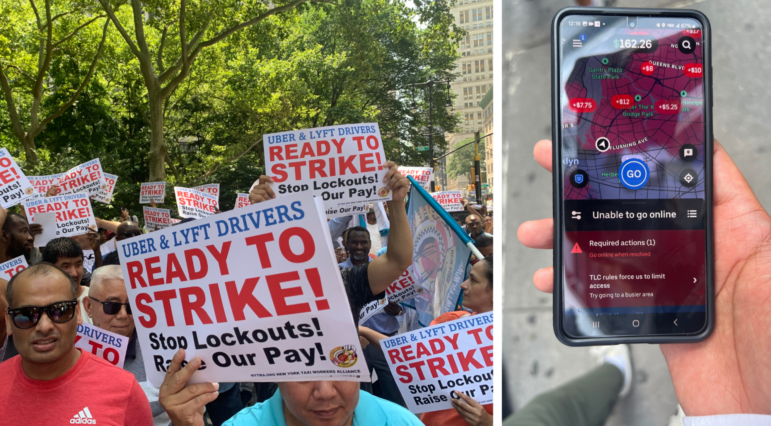
Melanie Gonzalez, Subrina Singh
Left: Uber and Lyft drivers rallying against the lockout policy outside City Hall on July 17. Right: A driver displays how a lockout looks on the app.Hundreds of app-based drivers rallied at City Hall to call attention to the practice of Uber and Lyft “lockouts,” during which they’re unable to use the apps to pick up customer fares. The New York Taxi Workers Alliance and its members claimed the companies were using lockouts to avoid paying workers based on the Taxi and Limousine Commission’s minimum payment formula, which requires drivers to be indirectly compensated for time waiting for trips or on their way to pick up passengers.
“We are starving,” said Javed Tariq, co-founder of the NYTWA, said at the rally, which was covered by high school student journalists taking part in City Limits’ CLARIFY training program. “Uber is making billions of dollars of profit off the hard work of Uber drivers. It’s a sweatshop on wheels.”
Solar Eclipse 2024: What You Need to Know to See it in New York
(Published April 3)
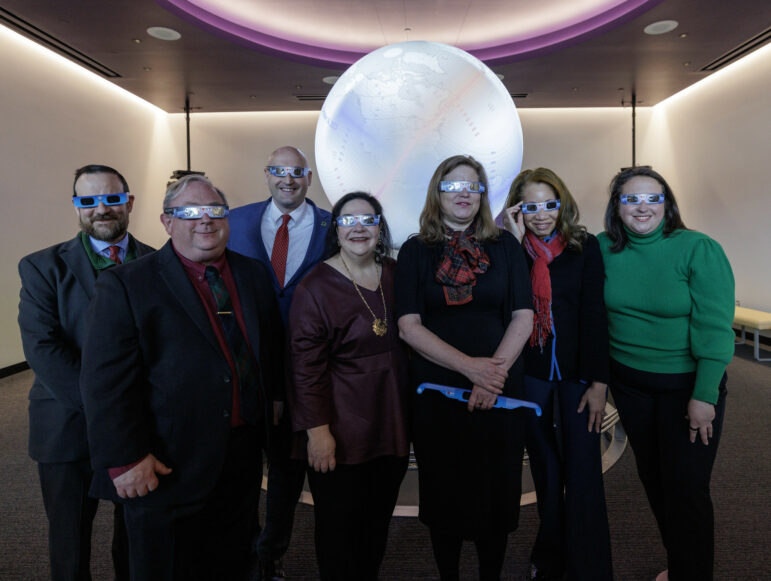
Mike Groll/Office of Governor Kathy Hochul
Commissioners from Governor Kathy Hochul’s administration don viewing glasses at a recent press conference about preparations for the eclipse.For the first time in 99 years, New Yorkers had the chance to see a total solar eclipse, with 29 counties in the western and northern parts of the state in its “path of totality,” where it’s possible to see the moon block the sun’s light entirely. New York City residents were able to witness a partial eclipse. “There will still be 88 percent to over 99 percent coverage,” of the sun, Gov. Kathy Hochul’s press office said at the time.
NY’s Housing Deal Is Here. What Does It Mean for Tenant Stability?
(Published April 20)
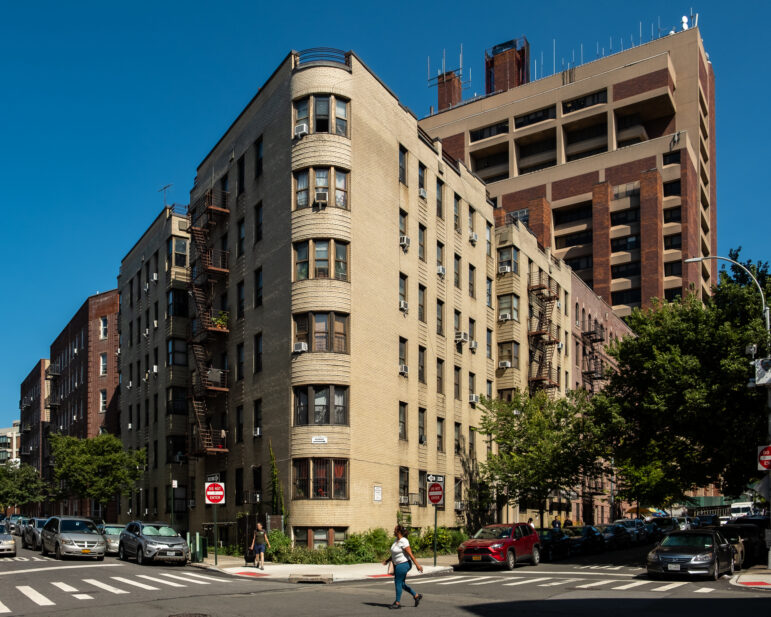
Adi Talwar
A rent stabilized building in the Northwest Bronx.
After weeks of speculation and negotiations, New York lawmakers and Gov. Kathy Hochul struck a deal on a state budget for fiscal year 2025 (though more than two weeks late). The package of policies and funding included a revised version of “good cause” protections for market-rate renters, a new tax incentive for affordable housing developers and allowed rent stabilized landlords to pursue larger rent increases following apartment renovations.
With Gowanus Rezoning Construction Underway, NYCHA Residents Ready for Their Share
(Published July 31)
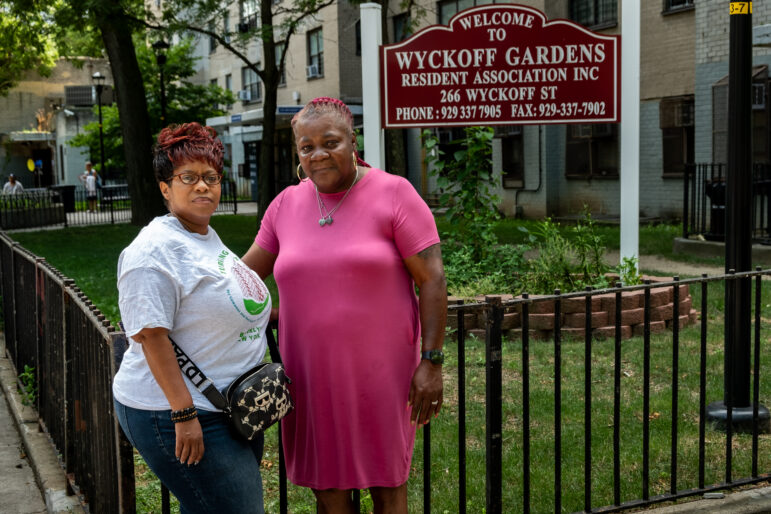
Adi Talwar
Tenant association presidents of NYCHA’s Gowanus Houses and Wyckoff Gardens.When the City Council adopted a rezoning plan for Gowanus in 2021, funding for the area’s public housing developments was a key part of the negotiations. The city earmarked $200 million for NYCHA repairs as part of the deal, including new windows, kitchens and bathrooms across the 15 buildings at Gowanus Houses and three buildings in Wyckoff Gardens.
The long-awaited renovations are expected to kick off in 2025, and take between three to four and a half years. “To see new cabinets because they’re breaking down, to get new floors and tiles, especially the bathroom, oh lord,” said Theresa Davis, the tenant association president of Gowanus Houses.
More Than 10,000 Public Housing Apartments Abated for Lead, NYCHA Says
(Published Oct. 25)
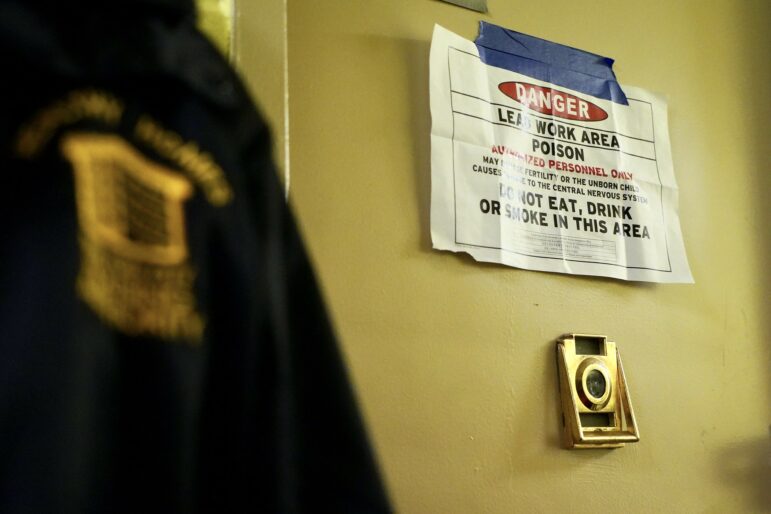
Gerardo Romo / NYC Council Media Unit
A sign warning of lead abatement work underway in a NYCHA building in 2023.The New York City Housing Authority (NYCHA) completed abatement work at more than 10,000 apartments over the last three years, officials announced this fall. The milestone comes five years after a 2019 federal monitorship agreement that put stricter oversight in place, spurred by the housing authority’s rife history with lead requirements: between 2013 and 2015, NYCHA filed documents that falsely claimed it was in compliance with inspection rules, the city’s Department of Investigation found.
City Councilmember Chris Banks, chair of the Committee on Public Housing, called the progress “a step in the right direction.”
“There is still much work to be done,” said Banks.
Spiking Evictions Renew Calls to Reform NYC Marshals System
(Published Aug. 26)

Marc Fader
A marshal’s eviction notice, seen in 2010.Last year was the most profitable on record for the city’s marshals, who enforce court orders on behalf of the city—carrying out evictions, garnering wages, booting cars, and seizing property.
City marshals served 13,448 evictions and made $19.5 million in income in 2023, both highs since before the COVID-19 pandemic began. During 2020-2021, when the eviction moratorium protected vulnerable renters from eviction during economic uncertainty, marshal revenue plummeted to just $4 million each year.
NYC Stabilized Tenants Face Another Round of Rent Hikes
(Published May 1)
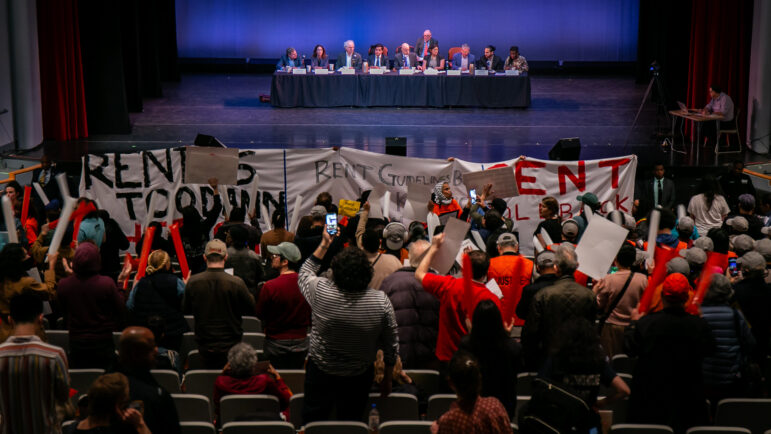
Adi Talwar
The Rent Guidelines Board’s annual preliminary vote in late April.The Rent Guidelines Board’s annual vote on rent adjustments for tenants in the city’s 1 million rent stabilized apartments was especially raucous this year. At a preliminary vote in April, its two tenant members walked out in protest, dismissing the process as a sham due to outsized influence from Mayor Eric Adams, who appoints the board’s members. The body ultimately voted to adopt rent increases of 2.75 percent on one-year leases and 5.25 percent on two-year leases, the third hike in a row since Adams took office.
This Map Can Help You Find Out If Your Home Has Lead Pipes
(Published Nov. 18)
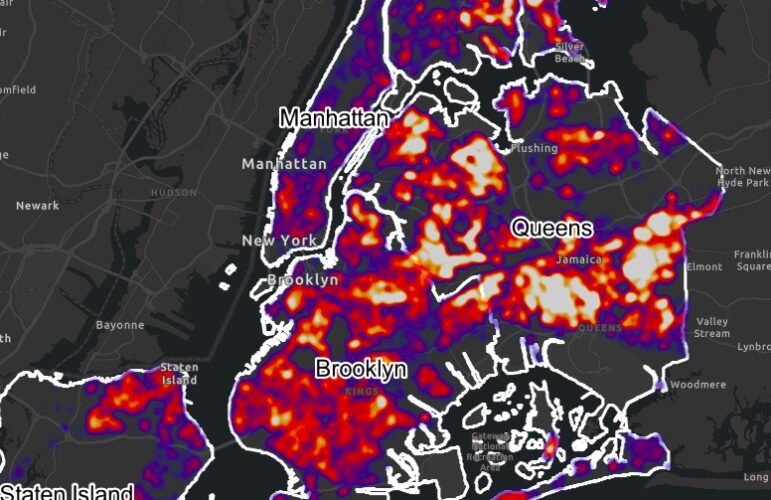
Screenshot/New York League of Conservation Voters
New York City has over 124,000 buildings with lead pipes, city data analyzed by the New York League of Conservation Voters shows. That means one in six New Yorkers, or an estimated 1.3 million people, could be drinking water that passed through a lead or possible lead pipe, the study found. The group created an interactive map where users can look up their address to see if it’s among those impacted.
“We want to make sure that everyone who’s living in a building with a possible lead pipe knows about it so that they can take all those simple precautions to protect themselves,” said Josh Klainberg, senior vice president of the NYLCV.
To reach the editor, contact Jeanmarie@citylimits.org.


